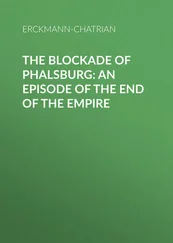Chalmers Johnson - The Sorrows of Empire - Militarism, Secrecy, and the End of the Republic
Здесь есть возможность читать онлайн «Chalmers Johnson - The Sorrows of Empire - Militarism, Secrecy, and the End of the Republic» весь текст электронной книги совершенно бесплатно (целиком полную версию без сокращений). В некоторых случаях можно слушать аудио, скачать через торрент в формате fb2 и присутствует краткое содержание. Год выпуска: 2003, ISBN: 2003, Издательство: Macmillan, Жанр: Старинная литература, на английском языке. Описание произведения, (предисловие) а так же отзывы посетителей доступны на портале библиотеки ЛибКат.
- Название:The Sorrows of Empire: Militarism, Secrecy, and the End of the Republic
- Автор:
- Издательство:Macmillan
- Жанр:
- Год:2003
- ISBN:9780805077971
- Рейтинг книги:4 / 5. Голосов: 1
-
Избранное:Добавить в избранное
- Отзывы:
-
Ваша оценка:
- 80
- 1
- 2
- 3
- 4
- 5
The Sorrows of Empire: Militarism, Secrecy, and the End of the Republic: краткое содержание, описание и аннотация
Предлагаем к чтению аннотацию, описание, краткое содержание или предисловие (зависит от того, что написал сам автор книги «The Sorrows of Empire: Militarism, Secrecy, and the End of the Republic»). Если вы не нашли необходимую информацию о книге — напишите в комментариях, мы постараемся отыскать её.
The Sorrows of Empire: Militarism, Secrecy, and the End of the Republic — читать онлайн бесплатно полную книгу (весь текст) целиком
Ниже представлен текст книги, разбитый по страницам. Система сохранения места последней прочитанной страницы, позволяет с удобством читать онлайн бесплатно книгу «The Sorrows of Empire: Militarism, Secrecy, and the End of the Republic», без необходимости каждый раз заново искать на чём Вы остановились. Поставьте закладку, и сможете в любой момент перейти на страницу, на которой закончили чтение.
Интервал:
Закладка:
Yet, although our own nation is filled with military installations—there are 969 separate bases in the fifty states—ours has, oddly enough, never been a warrior culture. 1Our people are largely not in uniform, nor (until the recent “war on terrorism”) were military uniforms common in our cities and airports; our streets seldom see a military parade; our concerts are rarely filled with martial music; and yet ours is also a thoroughly militarized empire—though our model of a warrior seems most likely to be a military bureaucrat. The modern American empire can only be perceived, and understood, by a close look at our basing policies, the specific way we garrison the earth. To trace the historical patterns of base acquisition and to explore our basing systems worldwide is to reveal the sinews of what has until very recently, for most Americans, been a largely hidden empire.
Our imperial history is littered with bases on foreign soil. Our foreign policy is now largely made in the Pentagon and implemented by commanders who spend their lives cloistered in our myriad outposts, which constitute a deeply interconnected world with its own customs, habits, and ways of living as well as its own hierarchies and professional classes who are increasingly detached from the rest of us. It is hard even to remember that on the eve of World War II our regular army was a mere 186,000 men. Now, the 1.4 million-strong “peacetime” military, funded by a defense budget larger than most national budgets, is made up of both men and women living in a closed-off, self-contained base world serviced by their own airline—the Air Mobility Command, with its fleet of long-range C-17 Globemasters, C-5 Galaxies, C-141 Starlifters, KC-135 Stratotankers, KC-10 Extenders, and C-9 Nightingales—that links outposts from Greenland to Australia. Starting with our turn-of-the-century imperial beginnings, I want to explore here how that world of bases was assembled to become an imperial motor driving the United States on to ever more wars.
Though, as I said earlier, we were already a great continental empire by 1898, the Spanish-American War first set us on our modern path of imperialism. Some of the bases we acquired at that time—Guantánamo Bay, Pearl Harbor, Guam—are still overseas military outposts or are on territories that we later directly annexed. Under the influence of Wilsonian idealism, we did not follow our British, French, and Japanese allies in exploiting victory in World War I to acquire new colonies. It was not until World War II that our empire of bases achieved its global reach, and the United States still seems to regard its continuing occupation of the territory of its former Axis foes as something akin to a natural birthright. The Korean War, though ended in stalemate, nonetheless projected us onto the Asian mainland. After Vietnam, our base numbers were cut—not just in Southeast Asia but in other places where our defeat emboldened governments or peoples to oppose our military presence in their countries; the three most important such cases were Spain, Greece, and the Philippines. With the end of the Cold War, we resumed our march toward empire. Our 1999 war against Serbia, our two wars with Iraq, and our war against the Taliban and al-Qaeda in Afghanistan allowed us to expand our empire of overseas bases into the broad southern Eurasian region stretching from the Balkans in the west to the Chinese border in the east, an oil-rich area that opened up to our imperial dreams after the demise of the Soviet Union. Iran is now the only serious obstacle to our military domination of the whole region.
As mentioned in the last chapter, the Pentagon calculates “plant replacement values” in U.S. dollars for all the overseas bases whose existence it publicly acknowledges. The total value of these 725 recognized overseas military bases as of September 11, 2001, was $117,838.5 million (c. $118 billion). Of this $118 billion, the bases acquired from the vanquished of World War II and still in our possession were said to be worth $78 billion—$38 billion in Germany and $40 billion in Japan, or 66 percent of the total. The Pentagon prices the garrisons it established in Korea as a result of the Korean War at $11.5 billion. In other words, according to the Department of Defense’s calculations, in “value” terms World War II and Korea accounted for three-quarters of our contemporary empire of bases. The Pentagon does not, however, include in its calculations any of our recent bases in the Balkans, the Persian Gulf, or Central Asia. Plant replacement values have not been published for these areas because our government is reluctant to admit that they are actually imperial outposts. (In some cases, too, Islamic governments in the Persian Gulf do not want to publicize our “footprint” there.) But the fact is, we vastly enlarged and consolidated our Persian Gulf bases in preparation for the renewed war against Iraq, a development discussed in the next chapter. But first some groundwork.
THE SPANISH - AMERICAN WAR AND OUR LATIN AMERICAN BASES
Most of our bases in Latin America derived from the Monroe Doctrine of 1823 and the Spanish-American War of 1898. Following the American declaration of independence from the British Empire in 1776, Americans generally thought of their new country as the quintessential anti-imperialist state. For its first century there was some basis for this belief, so long as one was willing to regard the lands of Native Americans and Mexicans as essentially uninhabited. The American Revolution inspired a wave of uprisings across the Caribbean and South America that led to the independence of almost all the Spanish and Portuguese colonies. These rebellions in turn provoked the Monroe Doctrine, through which—according to the official account to be found in American textbooks—the United States appointed itself the protector of the nations of the Western Hemisphere against further European incursions.
The Monroe Doctrine itself actually reflected the ideas of John Quincy Adams, a member of the Federalist Party, not President James Monroe, a Republican. When Adams decided in 1823 to run as a Republican in the upcoming presidential election, he needed to counter suspicions that he had “pro-British” leanings, and the Monroe Doctrine was designed to this end. 2By the time it was actually proclaimed a fundamental principle of our foreign policy, during the presidency of James K. Polk (1845-49), who added more territory to the United States than any president other than Thomas Jefferson, its effect was already imperialist. It was first invoked in a dispute with Britain over the Oregon Territory and again to warn off any European powers that might care to interfere in the controversies that led to the Mexican War of 1846-48.
Traditional interpretations of American imperialism follow a vein already familiar from writings about British imperialism—namely, we “conquered half the world in a fit of absence of mind,” were “reluctant imperialists,” and lacked “rationality of purpose” in what we were doing. 3As the international relations analyst Ronald Steel has remarked, “The theme of reluctance is one of the most pervasive explanations found in the histories of colonialism.” 4In addition to arguing that we never really intended to become imperialists, American historians divide U.S. actions to conquer other peoples into a continental strand and a maritime strand, maintaining that only the maritime strand constituted “real” imperialism. The continental strand—the westward movement of conquest over indigenous peoples and Mexicans—is usually considered mere “expansionism,” as if some inexorable pressure beyond planning or will forced us on.
The shift from the continental to the maritime strand at the end of the nineteenth century was, according to Frederick Jackson Turner’s famous thesis of 1893, caused by the closing of the frontier. Serious scholarship has long ago revealed the ideological intent of Turner’s thesis, but his was certainly one of the more sophisticated defenses of America’s turn to overseas expansion. Even so, prominent American historians like Yale University’s Samuel Flagg Bemis have argued that the imperialism that began in 1898 was “a great aberration in American history,” one that in his view would ultimately be corrected by twentieth-century liberal political leaders such as Woodrow Wilson and Franklin Roosevelt. 5
Читать дальшеИнтервал:
Закладка:
Похожие книги на «The Sorrows of Empire: Militarism, Secrecy, and the End of the Republic»
Представляем Вашему вниманию похожие книги на «The Sorrows of Empire: Militarism, Secrecy, and the End of the Republic» списком для выбора. Мы отобрали схожую по названию и смыслу литературу в надежде предоставить читателям больше вариантов отыскать новые, интересные, ещё непрочитанные произведения.
Обсуждение, отзывы о книге «The Sorrows of Empire: Militarism, Secrecy, and the End of the Republic» и просто собственные мнения читателей. Оставьте ваши комментарии, напишите, что Вы думаете о произведении, его смысле или главных героях. Укажите что конкретно понравилось, а что нет, и почему Вы так считаете.











